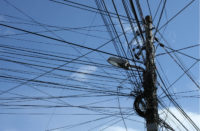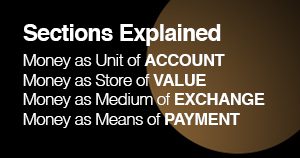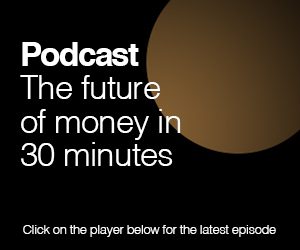A group of US legislators wants the US Treasury to introduce a fully anonymous digital dollar, countering plans for the central bank to take the responsibility of digitising the national currency.
The planned new digital dollar would also differ from the numerous other pilot projects around the world for central bank digital currency (or “CBDC”).
Although US dollar banknotes have been issued by the Federal Reserve since the 1960s, the US Treasury issued various kinds of currency from 1861 until the 1970s.
Draft bill for eCash
In the draft bill being introduced today to the House of Representatives by Stephen Lynch, Chair of the Fintech Task Force in the House Financial Services Committee and three other Democrats, the proposed digital dollar is called “eCash”.
“As digital payment and currency technologies continue to rapidly expand and with Russia, China, and over 90 countries worldwide already researching and launching some form of CBDC, it is absolutely critical for the US to remain a world leader in the development and regulation of digital currency and other digital assets,” said Lynch.
“By establishing a pilot program within Treasury for the development of an electronic US dollar, the eCash Act will greatly inform, compliment, and advance ongoing efforts undertaken by the Federal Reserve and President Biden to examine potential design and deployment options for a digital dollar,” Lynch went on.
Fed’s CBDC plans
In January, the Federal Reserve released a discussion paper on CBDC, in which it said it was soliciting opinions on the design of a future CBDC. A public comment period on the paper is still open and extends to May 20.
The Fed said that its initial analysis had concluded that a US CBDC should be “privacy-protected, intermediated, widely transferable and identity-verified”.
This appears to rule out the prospect of US citizens holding digital currency accounts directly with the central bank.
Instead, under the Fed’s plans, CBDC holders would have accounts with regulated intermediaries, such as banks or non-bank service providers, which would provide payment services. CBDC holders would therefore have to provide identity information to those intermediaries.
By contrast, today’s eCash bill would mandate the Treasury to develop a form of digital currency that includes full anonymity, privacy, and minimal generation of data from transactions.
Today’s eCash bill would mandate the Treasury to develop a digital currency that includes full anonymity, privacy, and minimal generation of data from transactions
At least two of the technologies selected for a pilot programme that would commence on the passage of the Bill would be based on secured hardware-based architectures that do not involve any common or distributed ledger, the draft legislation says.
One of those would include a stored-value magnetic or pin card option for storage and payment, and at least one must include a cell phone or SIM card option for storage and payment, it goes on.
Why the US Treasury should issue the digital $
According to Rohan Grey, assistant professor at Willamette University College of Law, the US Treasury is the public body best suited to issue a digital version of the dollar.
Grey was a 2021 guest on the New Money Review podcast, where he called for national legislatures to take a more active role in the design of digital currencies.
“The Fed, by its own admission, doesn’t have the institutional competency to do retail services directly”
“The Fed has clearly indicated that its vision of a CBDC would not be 1) anonymous, 2) bearer instrument, 3) provided directly to the public, 4) hardware-based,” Grey told New Money Review.
“That makes sense since the Fed is a central bank, and if you ask bankers what new technology can do, they’re going to say ‘a better bank account’.”
“By contrast, the Treasury has historically been responsible for issuing coins (Mint), paper currency (Bureau of Engraving and Printing) and pre-paid debit cards (Bureau of Fiscal Service), and eCash as a technology/form of money has far more in common with those technologies than it does to, for example, FedAccounts (which are good and complementary to this proposal, not in opposition to it),” Grey went on.
“But more broadly, the Fed, by its own admission, doesn’t have the institutional competency to do retail services directly, nor does it have the technical expertise or political mandate to make decisions on very difficult questions about how to balance civil liberties and law enforcement/national security interests,” Grey said.
“Those questions are rightly left to Congress and the elected/political executive branch—that is, the President and the Treasury Secretary”.
“To put it another way, if the central banks had not already dominated the conversation and refracted our entire discourse through the lens of CBDCs, and someone said ‘we should create a bearer instrument, hardware-based form of currency that has all the features of physical cash and is made available directly to the public with no intermediaries, which agency should take the lead?’. The obvious answer would be the US Treasury,” Grey said.
Sign up here for the New Money Review newsletter
Click here for a full list of episodes of the New Money Review podcast: the future of money in 30 minutes
Related content from New Money Review
How India leapfrogged the West in payments
US struggles to speed up payments









